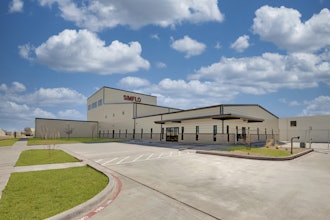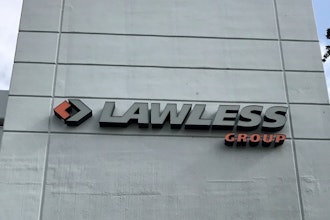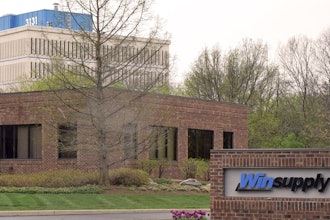BDI's focus is equal parts domestic and global expansion, along with balancing the needs of customers, suppliers, and associates -- all while introducing new customer-driven products and services. So how do they get it all done?
|
John Ruth, President & COO of BDI U.S. |
The walls of the conference room at BDI’s U.S. headquarters in Cleveland, OH are adorned with large black and white photographs. At first glance, you might dismiss these as standard “office” artwork: pretty landscapes (bridges, in fact) that someone selected based on their ease on the eyes.
But, John Ruth, President & COO of BDI U.S. explains, these are more than just artwork. These are the famous bridges peppering the landscapes of the 10 countries that BDI now calls home. It’s a reminder, he says, of the company’s commitment to building bridges around the world.
Workforce Management
What’s really at the root of this commitment to globalization for BDI is a customer-focused business model. It was in 1992 that this OH-based company first ventured over the border into Canada at the request of a customer. Since then, BDI has expanded into Asia, Europe, and Mexico, as well as opened numerous new branches throughout the United States. Since then, the company has done its best to nurture each global location with local talent, with a recent undertaking to standardize with a single global ERP system (SAP) to ensure adequate communication and consistency.
“We’re an interesting mix of a big company and a small company at the same time,” says Ruth. “(BDI CEO) Carl James is truly an entrepreneur, and wants to foster that entrepreneurial spirit in the local markets.” Much of this is facilitated by the company allowing for more autonomy from the local managers of the individual BDI locations, essentially giving them the freedom to make decisions based on their expertise of the local market needs. This approach serves a dual purpose for BDI. One, it allows for more targeted, region-based decision-making. Also, says Ruth, the autonomy attracts a talented workforce, and incentivizes their long-term growth at the company. “We also aggressively promote from within by training our people,” he says. Ruth, for example, started with BDI in 1988 on the order desk at the company’s Cedar Rapids, IA branch. Bill Shepard, Director North America Sales & Marketing, began as a driver in 1987 in Waterloo. Despite their longevity, both men still lag behind the 40+ employees that have worked at BDI for 30 years or more. Says Shepard, “You can start as a warehouse parts driver at our company, and within a period of time, be a branch manager anywhere in the world—or right down the street. Very few companies can offer that.”
For BDI, retaining a solid base of well-trained, happy personnel is a critical foundation for a growing business—especially in a niche like industrial distribution. “People coming out of universities, technical colleges, and even high school don’t look at distribution as an attractive career,” says Ruth. “That is unfortunate and we as an industry need to do a better job of attracting people to our industry, because it’s a great career.”
Educating Customers & Suppliers Alike
|
BDI's Bill Shepard at the company's Cleveland facility. |
For Ruth, part of the challenge of being an industrial distributor is in being able to adequately tell what he calls “the value story” to the customer base. “As an industry, we need to do a better job of telling that value story, documenting the solutions we provide, and sharing them among clients.”
The word “solutions” comes up a lot these days in the industrial distribution market, as businesses struggle to find ways to accurately convey the total service profile they offer. For BDI, this is defined as the company’s ability to apply the products it sells correctly, to drive the total cost of ownership down. “We’re good at that, and I think distribution (in general) is pretty good at that. But we need to make our customers understand what we’re doing for them.”
One of the service endeavors that has been a key driver to the success of BDI has been its SmartMRO program. SmartMRO is an Integrated Service Management program that enables BDI customers to streamline their supply chain. SmartMRO utilizes bar code scanners, provides line item visibility throughout the supply chain, and is accessed using a robust online interface that delivers information that helps them make decisions on their inventory investments. One of the unique features is that it allows the customer to own their data and even integrate with other supplier partners through a single pull card ordering system.
“The other part,” adds Ruth, “is the back office fulfillment side of the business. Today that’s become a given; the logistics and support is going to become instantly available.” On the other end of the loop, BDI has developed an initiative to actively work with its supplier partners to streamline the supply chain. The company calls this traditional VMI approach “PMI” (for partner managed inventory). This change in the wording reflects BDI’s clear emphasis on these supplier partnerships: “’Vendor’ is not a very partnership-type term,” explains Shepard.
The PMI program works as a way to ensure production levels reflect actual up-to-date demand. BDI takes its top 10 or 15 suppliers and provides them with daily transactional data, as well as BDI’s stock levels, so inventory controls are based on real, live information. This ability for suppliers to be flexible from a production side (to ensure they produce what their distributors actually need), has allowed for a streamlining of the entire process. “We need to shorten the span from when demand recognizes that a product is needed, until that product is available,” Ruth explains of the initiative. “Our customers are forcing us to shorten that span.”
It’s also this strategy that has taken the historical hub-and-spoke network and given it some much-needed visibility. In the typical model, Shepard estimates the visibility time between a customer’s order and when the product gets back to the branch operation at three weeks. For BDI, the timeframe is now three days. In addition to the PMI program, the company owes its narrowing of that timeline to the Lean principles it institutes in its back office operations, including all warehousing functions, receiving, inventorymanagement and controls, the returns process, and financial statement preparations. “We’ve seen 40 to 60 percent improvement in our back office processes by applying Lean principles,” says Ruth.
Smart & Smarter
|
BDI's Cleveland facility is adorned with plaques honoring the employees who stayed with the company for 30 or more years. |
When it comes to BDI-branded solutions, the company hasn’t just stopped with SmartMRO. Besides helping customers streamline their processes, this distributor has also offered up an innovative product-specific solution it calls SmartLube. Based on its longevity in the bearing market (BDI does stand for Bearing Distributors Inc., after all), the company took its expertise to the development side and launched a product designed to help end users deal with a consistently expensive problem: over- and under-lubrication. This privately branded product (a solid lubricant inside a ball or roller bearing that has a very wide range of temperature applications) is also added to BDI’s top-tier branded products. “It’s a solution that costs more in the beginning, but saves significantly on a long-term basis,” says Ruth. “We’re finding that a significant number of our customers are willing to spend more money at the beginning to reduce their total cost of ownership.”
And beyond becoming a smarter, more innovative partner to its customers, BDI plans to expand in a calculated way. “The goal is to extend the footprint of BDI U.S. to get our products and our expertise to the customers same-day or next-day,” says Shepard. But it’s calculated growth, he explains. “It’s more about where it makes sense and where our customers ask us to go.” Just this year, the historically Midwest and East coast company has answered the customer call in places like Los Angeles, Salt Lake City, and Dallas. “Our growth will be a mix: organic growth through territorial and branch growth, as well as acquisitions,” says Ruth. “Our last acquisition was outside the traditional bearings world; it was a pneumatics distributor. We’ve recognized that we can add additional products to our offering.”
Part of this method behind entering these unchartered territories lies, once again, with BDI’s customer focus. The difficulty behind these opportunities can be balancing the expansion with the company’s ability to provide technical support for it. “We believe we need to be able to provide the same level of support, no matter what the product line is,” says Ruth. When BDI attempted its first foray into fluid power years back, the company determined that its bearing and power transmission expertise was being stretched in trying to cover fluid power. As a solution, the company put in a network of specialists to support the existing branch operations. “Over time,” explains Shepard, “the typical bearing transmission and power expert/seller becomes more and more fluent in fluid power applications as they work with the specialist.”
These types of investments in talent preclude a brick and mortar approach for BDI. “If a customer says they’d like to have local support for an operation that’s maybe in a remote area, we’ll start out by putting a salesperson there to help support that operation. As that relationship builds, then we’ll come back in with brick and mortar and build an actual branch.”
Adds Ruth: “We would call that in-plant technical support, and we’ve done that all over the world. We’ve taken best practices from Europe and from China, and brought them back into the U.S. With the improved logistics that we have today, we’re seeing that you don’t need as many physical locations to be able to provide coverage to the customer. And it helps control your operating costs.”
Another way BDI has been able to help its customers in a non brick and mortar kind of way has been through the recent re-launch of its e-Commerce site. “Our market research tells us that more of our customers are moving online, either to gather information or to order a product,” says Ruth. “We decided to invest in a website upgrade because we recognized that, coming out of the recession, we would want a better platform to support our customers on.” One of the key solutions coming out of this website upgrade has been BDI’s expanded ability to do punch out with customers. Instead of having to deal with double entry between a supplier’s website and an internal ERP portal, customers can utilize a BDI system which sends an order back to their ERP system, saving them valuable time. The company also utilized two internal teams to develop data content for all applications, to allow for better access and searchability on the site.
A Little Fun
Yet for all the hard work over the last many years, BDI still knows how to kick back and celebrate. Last year, the company commemorated its 75th anniversary with a party at the Cleveland Science Center and the Rock & Roll Hall of Fame. It was a great opportunity for the company to reward its associates with recognition for a job well done. Because as the company continues to build bridges—both into new cities, countries, services, and product categories—it doesn’t have to be all work and no play. Says Ruth, “It’s a fun place to be, and we’ve got a lot of great people.”


















